July 2017
Rail News: Mechanical
CP, rail-car market updates were bright spots at Midwest shipper association’s summer meeting
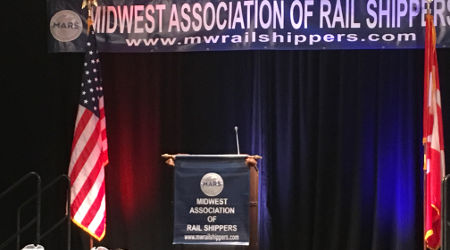
By Jeff Stagl, Managing Editor
Midwest Association of Rail Shippers (MARS) leaders have noticed a surge in attendance the past few years at the organization’s summer meeting, which traditionally is held in Lake Geneva, Wisconsin.
Last year, the association set an attendance record; this year, it set another one, when more than 500 rail industry constituents descended on the Grand Geneva Resort July 10 and 11. There were so many attendees, MARS set up both a main ballroom and an overflow salon at the resort’s conference center to accommodate everyone.
The meeting’s growing popularity has a lot to do with the epicenter of MARS’ region. The Chicago-based association represents the interests of rail shippers in Illinois, Indiana, Iowa, Michigan, Minnesota, Missouri, Nebraska, North Dakota, Ohio, South Dakota and Wisconsin, as well as Manitoba and Saskatchewan, Canada.
As part of its mission, MARS strives to develop education programs to inform members about rail operating practices, new transportation innovations and legislative matters — all of which revolve in and around Chicago, and penetrate the Midwest.
The latest meeting’s agenda reflected those educational pursuits. The full day of presentations on July 11 included two keynoters: Canadian Pacific President and CEO Keith Creel, and Norfolk Southern Railway VP of Industrial Products Mike McClellan. Other speakers hailed from the American Trucking Associations (ATA), GATX Corp., and such rail shippers as Nissan, Perdue Farms and Consolidated Grain and Barge Co.
Leading off the day was CP’s Creel. He became the Class I’s president and CEO on Jan. 31 — the 17th person to lead CP since 1881 — after E. Hunter Harrison left the company and later became CSX’s top executive.
Creel had previously worked alongside Harrison at CN when Harrison led that Class I from 2003 to 2009, and Creel did so again when he joined CP in February 2013 as president and COO. Assuming CP’s top spot wasn’t necessarily something he expected, Creel said at the beginning of his keynote.
“I never dreamt I would lead CP, that I would have this honor,” he said.

Harrison and Creel spent about five years working to turn around CP, a poor-performing railroad — both financially and operationally — that “wasn’t known for its service or for making money,” Creel said.
“This company had lost its way. It was bleeding a slow death,” he said. “It was a tough five years, and we didn’t always get things right.”
One thing they believe was the correct call: implementing Precision Railroading, a scheduled railroad blueprint that Harrison had instituted at CN and the Illinois Central Railroad.
“Our service averages now are better than they’ve ever been,” said Creel.
To make them better — and CP’s earnings better still — he aims to continue raising the bar on operational and financial performance.
“My mandate is to grow this iconic company,” he said.
Creel expects to do that in part by improving operating practices and embracing innovations. For example, CP now maintains trip plans, or a schedule for every rail car. Implemented last fall, the trip plans serve as a daily performance barometer since a car must stay within a set service window of plus or minus two hours.
The plans help the railroad “see trouble spots” and provide customers a viable switch window, said Creel.
“We now have a 93 percent average service rate,” he said.
CP also employs a dedicated train program that covers three-quarters of the Class I’s grain movements. The railroad now can commit grain cars for customers over a 12-month period, said Creel.
“We can turn assets faster,” he said.
And CP can do it with longer trains. The Class I is operating more 134-car instead of 112-car trains to better manage assets without acquiring additional equipment, said Creel. The railroad can move 20 percent more freight on a 134-car train with the same number of locomotives as a 112-car train, he added.
“It helps us use what we have more efficiently,” said Creel. “With fewer trains [on our network], we create capacity, which is part of the recipe for success.”
The main ingredient for success in the trucking industry is recruiting more drivers, said ATA Second Vice Chairman Barry Pottle, who spoke later on the morning of July 11. The industry has 3.5 million professional drivers but needs 50,000 to 100,000 more to operate trucks currently sitting idle, said Pottle, the owner, president and CEO of trucking firm Pottle’s Transportation Inc.

Over the next 10 years, the trucking industry estimates it’ll need to add an average of 89,000 drivers per year to meet demand. That pressures recruiting efforts, which already are challenged due to potential candidates’ concerns about long working hours and taking long trips away from home, said Pottle.
“We do a lot of trucking for Wal-Mart because they can’t find their own drivers, either,” he said.
In terms of trucking volume, the ATA projects a modest pick up for the full year. There’s been a slight acceleration in freight activity coupled with supply constraints, said Pottle.
As for rail volume in 2017: Although carloads for the most part are up, it so far has been a modestly negative year for freight-car demand, said GATX Senior VP and Chief Commercial Officer Paul Titterton during his presentation right before the lunch break. Coal carloads continue to be a drag — the key commodity’s share of total rail volume eroded from 39 percent in 2008 to 26 percent in 2016, he said.

Some observers are saying the rail-car market has bottomed out, but the car backlog stands at about 60,000 units, well off historic sub-50,000 lows, said Titterton.
“I think it’s dangerous to call it a bottom and time a recovery [now],” he said. “It appears to be an uncertain time in the car industry.”
That uncertainty impacts car lessors the most: They own about half of all cars in North America, with railroads and rail shippers owning about 20 percent each, and TTX Co. owning the other 10 percent. The good news is lately, about 70,000 fewer cars have been reported to the Association of American Railroads as idle, meaning they haven’t moved for 60 days, said Titterton.
Nissan is helping to keep some cars moving. The automaker produces about 2,400 vehicles per day at its Smyrna,Tennessee, plant, where 60 percent of the finished vehicles are shipped by rail, said Nissan Director of Logistics Ben Shain during his afternoon presentation. The plant is served by CSX.
Rail benefits Nissan as a lower-cost transportation option if vehicles are moving more than 500 miles, and to some degree if they’re moving 280 to 500 miles, said Shain. Rail offers speed of loading, safety, vehicle quality and environmental advantages, he said.
Industry-wide, U.S. auto production appears to have reached the end of an expansion period due to slightly lower demand, said Shain. In first-half 2017, U.S. auto sales fell 2.1 percent year over year.
Next year, MARS will mark its 250th meeting when the annual winter get-together is held Jan. 17 and 18 at the Westin Lombard Yorktown Center in Lombard, Illinois.
Keywords
Browse articles on Midwest Association of Rail Shippers Canadian Pacific Norfolk Southern Railway GATX American Trucking Associations Nissan
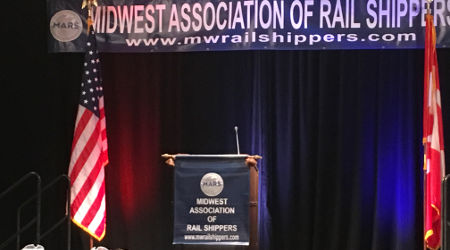
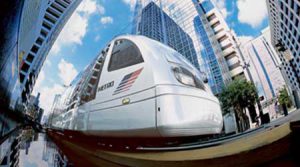
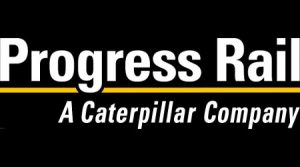
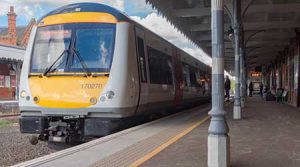
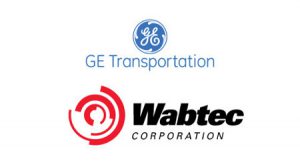




Be First to Comment